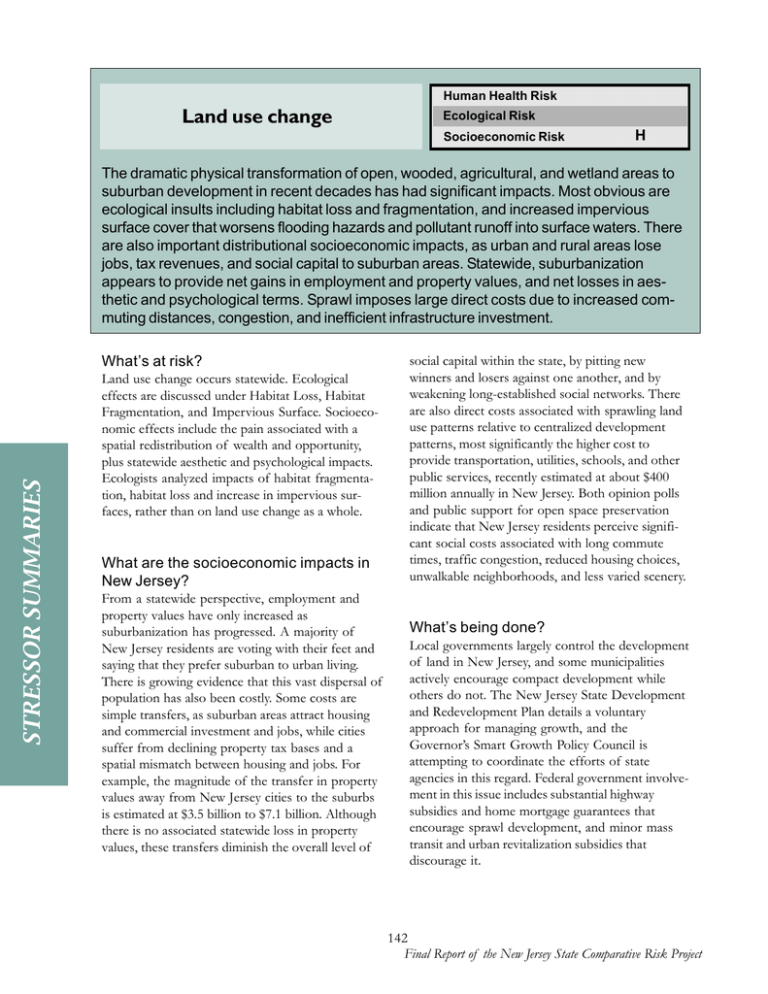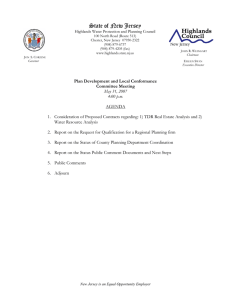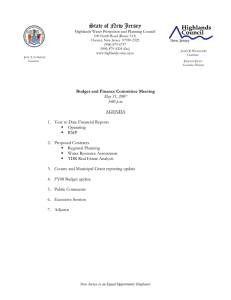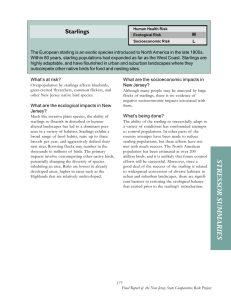Land use change
advertisement

Human Health Risk Land use change Ecological Risk Socioeconomic Risk H The dramatic physical transformation of open, wooded, agricultural, and wetland areas to suburban development in recent decades has had significant impacts. Most obvious are ecological insults including habitat loss and fragmentation, and increased impervious surface cover that worsens flooding hazards and pollutant runoff into surface waters. There are also important distributional socioeconomic impacts, as urban and rural areas lose jobs, tax revenues, and social capital to suburban areas. Statewide, suburbanization appears to provide net gains in employment and property values, and net losses in aesthetic and psychological terms. Sprawl imposes large direct costs due to increased commuting distances, congestion, and inefficient infrastructure investment. STRESSOR SUMMARIES What’s at risk? Land use change occurs statewide. Ecological effects are discussed under Habitat Loss, Habitat Fragmentation, and Impervious Surface. Socioeconomic effects include the pain associated with a spatial redistribution of wealth and opportunity, plus statewide aesthetic and psychological impacts. Ecologists analyzed impacts of habitat fragmentation, habitat loss and increase in impervious surfaces, rather than on land use change as a whole. What are the socioeconomic impacts in New Jersey? From a statewide perspective, employment and property values have only increased as suburbanization has progressed. A majority of New Jersey residents are voting with their feet and saying that they prefer suburban to urban living. There is growing evidence that this vast dispersal of population has also been costly. Some costs are simple transfers, as suburban areas attract housing and commercial investment and jobs, while cities suffer from declining property tax bases and a spatial mismatch between housing and jobs. For example, the magnitude of the transfer in property values away from New Jersey cities to the suburbs is estimated at $3.5 billion to $7.1 billion. Although there is no associated statewide loss in property values, these transfers diminish the overall level of social capital within the state, by pitting new winners and losers against one another, and by weakening long-established social networks. There are also direct costs associated with sprawling land use patterns relative to centralized development patterns, most significantly the higher cost to provide transportation, utilities, schools, and other public services, recently estimated at about $400 million annually in New Jersey. Both opinion polls and public support for open space preservation indicate that New Jersey residents perceive significant social costs associated with long commute times, traffic congestion, reduced housing choices, unwalkable neighborhoods, and less varied scenery. What’s being done? Local governments largely control the development of land in New Jersey, and some municipalities actively encourage compact development while others do not. The New Jersey State Development and Redevelopment Plan details a voluntary approach for managing growth, and the Governor’s Smart Growth Policy Council is attempting to coordinate the efforts of state agencies in this regard. Federal government involvement in this issue includes substantial highway subsidies and home mortgage guarantees that encourage sprawl development, and minor mass transit and urban revitalization subsidies that discourage it. 142 Final Report of the New Jersey State Comparative Risk Project


